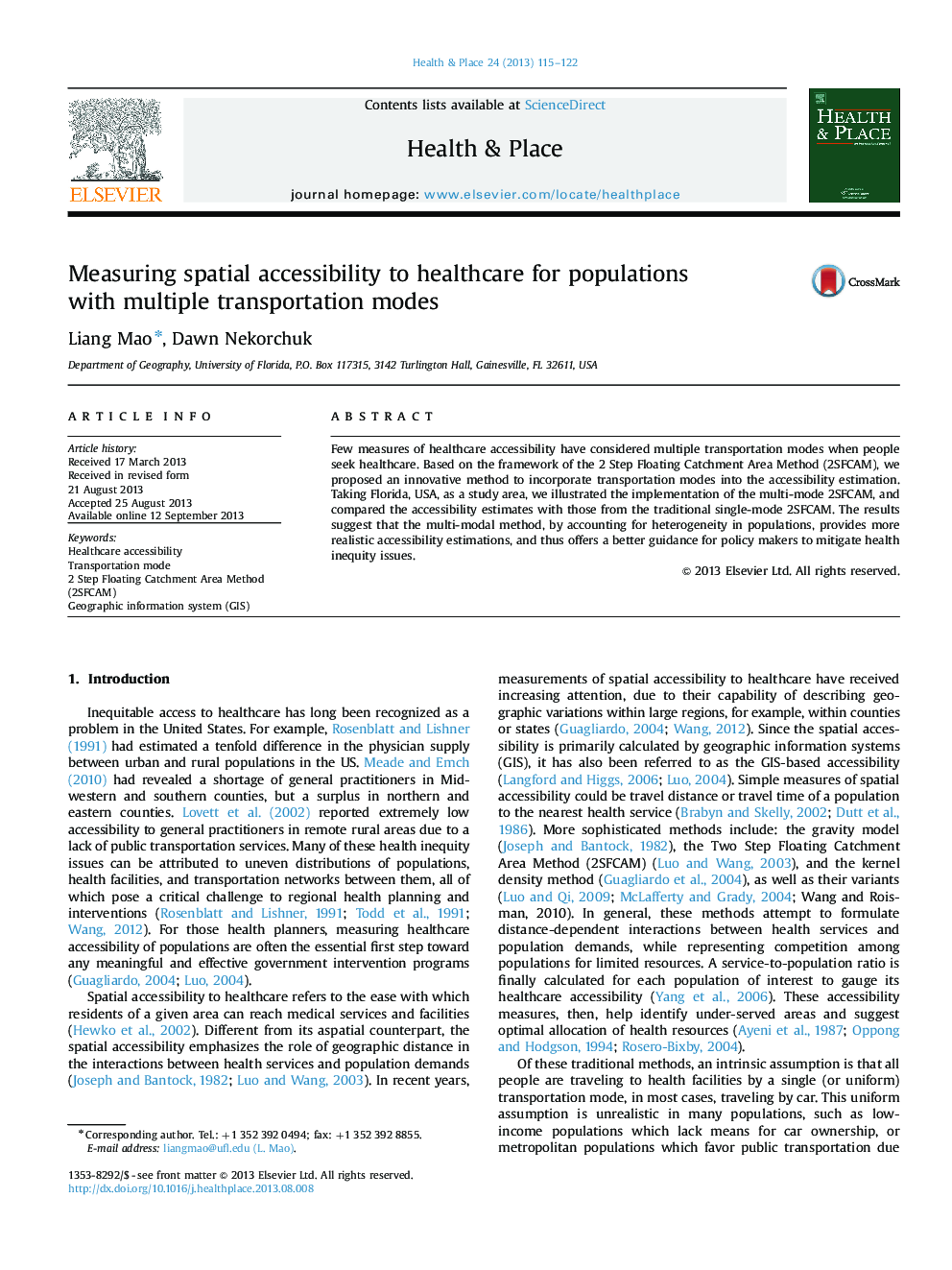| Article ID | Journal | Published Year | Pages | File Type |
|---|---|---|---|---|
| 7458927 | Health & Place | 2013 | 8 Pages |
Abstract
Few measures of healthcare accessibility have considered multiple transportation modes when people seek healthcare. Based on the framework of the 2 Step Floating Catchment Area Method (2SFCAM), we proposed an innovative method to incorporate transportation modes into the accessibility estimation. Taking Florida, USA, as a study area, we illustrated the implementation of the multi-mode 2SFCAM, and compared the accessibility estimates with those from the traditional single-mode 2SFCAM. The results suggest that the multi-modal method, by accounting for heterogeneity in populations, provides more realistic accessibility estimations, and thus offers a better guidance for policy makers to mitigate health inequity issues.
Related Topics
Health Sciences
Medicine and Dentistry
Public Health and Health Policy
Authors
Liang Mao, Dawn Nekorchuk,
